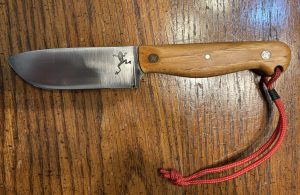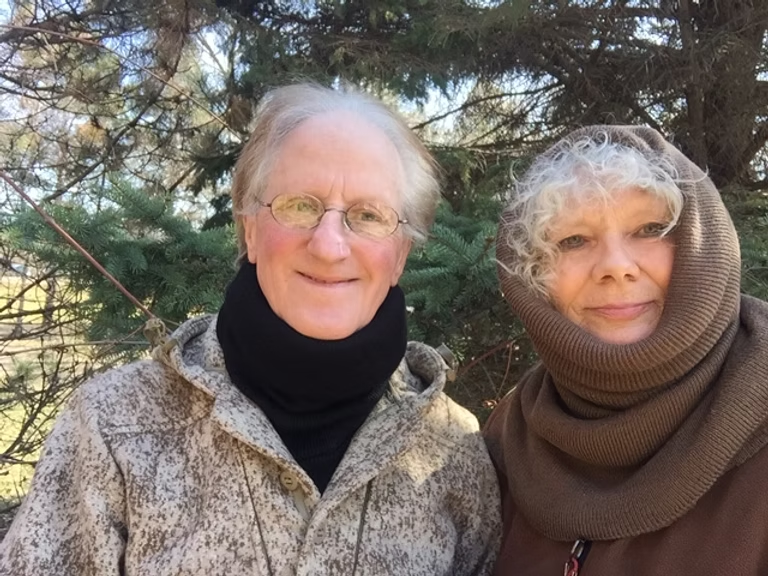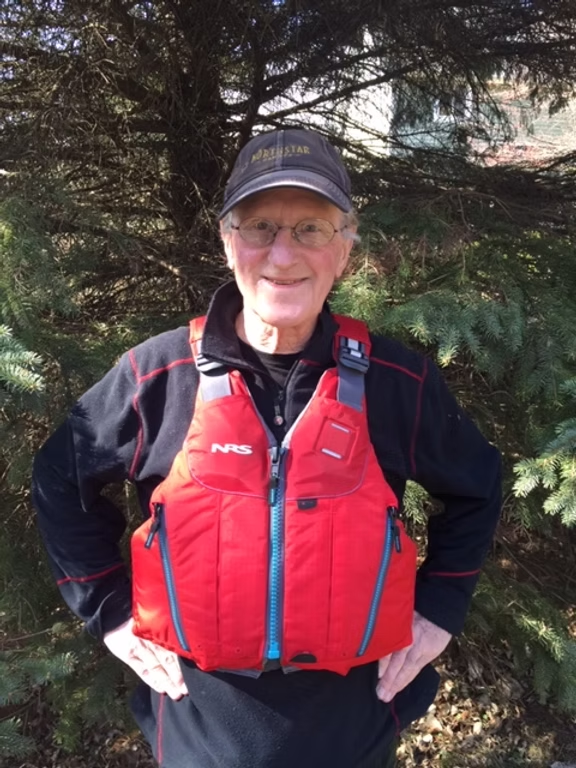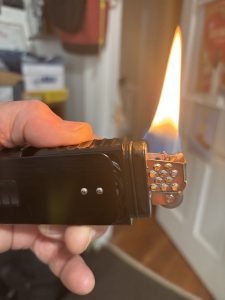
REVIEW: WEATHERWOOL NECK-GAITER AND NRS OSO PFD

Weatherwool’s new Neck-Gaiter is among a handful of outdoor products I’ve reviewed that are done “just right”. Knit in America (!) from fine (lace weight) luxuriously soft, pure merino wool, it excels in warmth, comfort, utility and elegance. Here’s what makes this neck-gaiter special:
Size: It’s about 30 percent longer and twice as thick as most neck-warmers. Constructed as a knitted tube that measures 42 inches by 9.5 inches, this tube is doubled to produce a 21 inch x 9.5 inch finished size. Because the tube is knit, not woven, it stretches comfortably far beyond its size, allowing it to double as a Scarf, Gaiter, Balaclava, Toque or Watch Cap…or as an arm, leg, torso warmer, or a sleeping bag neck-draft blocker. A six inch long vertical cut-out (slit) at the bottom, allows the doubled tube to rest smoothly without bunching—a thoughtful touch. The Neck-Gaiter’s long length and double-layer thickness make it a superior breeze-stopper. When the weather deteriorates to cold and wet, wool—especially merino wool—is best. Here’s why:
-Wool insulates better than synthetics when wet. The tightly twisted tiny wool fibers retain heat, and the natural lanolin in wool repels water for some time.
-Spill insect repellent (notably DEET) or solvent on a synthetic garment and you’ll probably have a hole. No problem with wool!
-Synthetics tend to trap body odors over the long haul. Wool is largely smell-free.
– Good wool (Weatherwool uses the best!), treated properly, lasts years longer than synthetics. Unlike synthetics, wool won’t pill over time.
-Unlike normal wool, merino is free of microscopic plant fibers that may cause allergies and itching.
– Wool has a much wider temperature-comfort range than synthetics.
Five out of five stars for the new Weatherwool Neck-Gaiter!
See the Weatherwool web-site (weatherwool.com) for available colors and pricing.
NRS “OSO” PFD

At the outset I should make it clear that I am not crazy about the new whitewater -capable PFD’s. I find them, heavy, bulky and not well ventilated. Some have side or angled zippers that make them awkward to put on and take off—a hassle if you do much portaging. Oh, how I yearn for the cool, trim vests of the past. If you’re old enough to have owned a Flotherchoc, Harishok, Seda or Extrasport PFD, you know what I’m crowing about. The extraordinary comfort of these defunct PFD’s was due to their “vertical tube” construction. Picture a series of narrow vertical nylon tubes filled with closed-cell foam (the Flotherchoc had air-filled tubes). The tubes expand, contract and bend to follow the contours of your body. And the fabric space between them encourages the exchange of air all around, which makes them cool in summer. Feels like you’re wearing a thin down vest rather than a bulky PFD. Vertical tubes are long gone—they’ve been replaced with foam panels that defy the curves of your body and the flow of air.
I’m always on the prowl for a better PFD, so naturally, I perked up when I discovered NSR’s new OSO PFD which is said to be “cool and comfortable” (Is OSO an anachronism for “Oh So Comfortable?). Here’s the skinny from NSR’s web-site.
- The thin back construction distributes the PlushFit™ foam flotation more broadly to reduce bulk and improve the fit.
- Five-panel design conforms effortlessly to your body’s shape, following your movements as you paddle, row, fish or swim.
- Features two large zippered pockets for on-the-water essentials, 3M® reflective accents, shoulder strap keepers and a hidden lash tab.
- Convenient front, zippered entry and six adjustment points for a customized fit.
The OSO is well-ventilated in the sides and back (not in the chest), so it shouldn’t be impossibly hot in the heat of July. The arm holes are large and allow unrestricted movement with either a double or single paddle—no chafing under the arm-pits even when performing strong braces. In-water ride-up is minimal when the straps are adjusted right (tight!). Like most panel-style PFD’s, the OSO is thicker in front (2.5 inches!) than in back (0.5 inches). The “thick chest” is noticeably bulky but it doesn’t adversely affect paddling. The side pockets are flat and unobtrusive. Zippers open on the “down” stroke: they would be more secure if they opened on the “up” stroke.
So, is the OSO as airy and comfortable as those long-gone tubular vests? Not even close! But it is one of the few panel types that can be worn all day without complaint. It looks good and it’s priced right. No, it’s not the best choice for big bad rapids, but NRS nailed it right for the kind of canoeing (flat-water through Class II+) that most people do. Sizing runs a bit large; order by chest size, not body weight.

My favorite PFD: In the above photo, I’m wearing an ancient Harishok PFD. How ancient? Um…about 40 years?. It has been patched and re-patched; replaced the zipper twice. But it has just 13 pounds of flotation so it’s minimal for rapids. For that, I rely on a well-used Kokotat “MsFit”. It’s designed for women, but its vertically cut front panels make it comfortable for men too. NRS also has a dedicated PFD for women. It’s called the “Nora”. I haven’t tried it but I’d guess it’s even more comfortable than the OSO. Try a ladies vest, guys–you might be pleasantly surprised!
My flagship book, CANOEING WILD RIVERS, 5th Edition, contains a wealth of advice on how to safely canoe difficult rivers.
My teen book, JUSTIN CODY’S RACE TO SURVIVAL! mixes a fictional wilderness survival tale with practical outdoor tips everyone should know–a first for books of this type. Adults love it too! Now available as an audio book!

